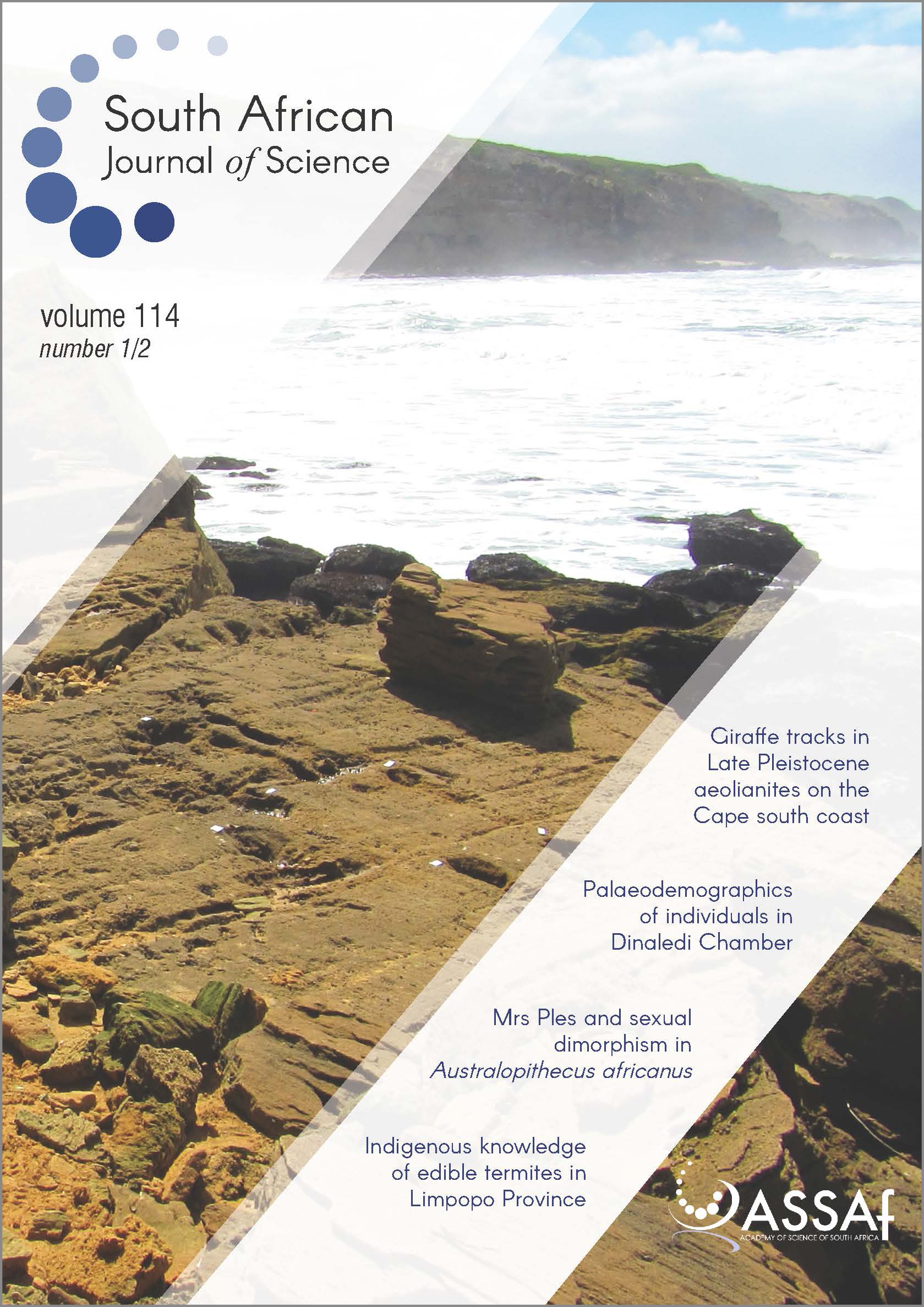Palaeoecology of giraffe tracks in Late Pleistocene aeolianites on the Cape south coast
DOI:
https://doi.org/10.17159/sajs.2018/20170266Keywords:
fossil tracks, Still Bay, savanna, South AfricaAbstract
Until now there have been no reliable historical or skeletal fossil records for the giraffe (Giraffa camelopardalis) south of the Orange River or northern Namaqualand. The recent discovery of fossil giraffe tracks in coastal aeolianites east of Still Bay, South Africa, significantly increases the geographical range for this species, and has implications for Late Pleistocene climate and vegetation in the southern Cape. Giraffe populations have specialised needs, and require a savanna ecosystem. Marine geophysical and geological evidence suggests that the broad, currently submerged floodplains of the Gouritz and Breede Rivers likely supported a productive savanna of Vachellia karroo during Pleistocene glacial conditions, which would have provided a suitable habitat for this species. We show evidence for the hypothesis that the opening of the submerged shelf during glacial periods acted as a pathway for mammals to migrate along the southern coastal plain.
Significance:
- The identification of fossil giraffe tracks on the Cape south coast, far from the area in which giraffe have previously been known to occur, is unexpected; conclusions about prehistoric conditions and vegetation can be drawn from this discovery.
Published
Issue
Section
License

All articles are published under a Creative Commons Attribution 4.0 International Licence
Copyright is retained by the authors. Readers are welcome to reproduce, share and adapt the content without permission provided the source is attributed.
Disclaimer: The publisher and editors accept no responsibility for statements made by the authors
How to Cite
- Abstract 2554
- PDF 1241
- EPUB 274
- XML 327













.png)